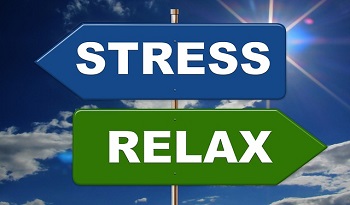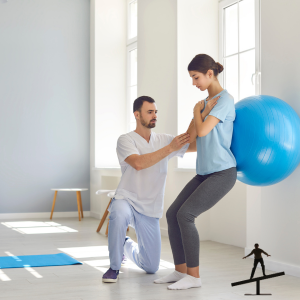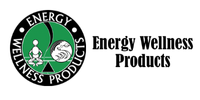Relieve Muscle Strain, Stress and Overall Muscle Soreness
Managing lower back pain and overall muscle soreness can be challenging, but there are effective home treatments available to help alleviate discomfort. Understanding the underlying causes of your pain is the first step toward finding relief.
Muscle soreness and tension often result from stress, overuse, or injuries. For lower back pain, common causes include sciatica, slipped or herniated discs, muscle spasms, strains, and sprains. Additionally, conditions such as arthritis and spinal stenosis can contribute to chronic pain. Unfortunately, pinpointing the exact source of discomfort can be difficult.
According to the CDC, 50% of adults experience some form of musculoskeletal pain, including arthritic pain, sciatica, and lower back discomfort. Repetitive strain is a significant factor, affecting 33% of those with musculoskeletal issues. Lower back pain is particularly prevalent, with estimates suggesting that 80% of people will encounter some form of this discomfort during their lives. Furthermore, spinal health is crucial, as 80% of chronic diseases are linked to spine-related issues.
Fortunately, various home treatments can help manage and relieve pain. By incorporating specific techniques and tools into your routine, you can effectively address muscle soreness and lower back strain. Keep reading to explore practical solutions for improving your comfort and well-being.
Stress a Common Cause of Lower Back Pain

We all can use a little relaxation because stress is always on the menu. Today’s hectic lifestyle keeps our daily stress levels turned up. Statistics show that most of us are unfortunately under moderate levels of stress most of the time! Just think about that 30-minute or more commute to work in the morning. If you couple your stress levels with the current Standard American Diet full of sugar and processed food, it’s no wonder that so many of us are not feeling well. Stress can raise our blood pressure, create musculoskeletal pain, and even lead to chronic health issues because it creates inflammation in our bodies. Stress can also be a major culprit in creating muscle tension, lower back aches, muscle soreness, and muscle pain. We all need to relax and let our bodies and minds take a break! Have you ever asked yourself why we keep going and going until we can’t go anymore?
Do you Show Symptoms of Stress
It’s no secret that stress can wreak havoc on the body, especially when dealing with it daily. Stress affects our body, our mind, our energy level, and can impact how we feel overall. Many of us think that when we experience pain or don’t feel well,l something is wrong and we are sick. However, stress may be the culprit! Stress influences us physically, affects our mood, and our behavior. Below is a list of some examples of how stress influences us.
- Physical Symptoms: Headaches, Muscle Tension, Muscular Aches and Pain, Muscle Soreness, Fatigue, Sleep Problems, and Digestive Problems.
- Moo:d Anxious, Restless, Overwhelmed, Angry or Irritable, Sad, and even Lack Motivation.
- Behavior: Overeating or Not Eating Enough, Overuse of Tobacco or Alcohol, Becoming Withdrawn Socially.
Stress also impacts our immune system. When stressed, we activate the part of our nervous system that prepares us for fight or flight. Our fight-or-flight system increases our heart rate and blood pressure, tells our digestive system to quiet down, and activates our stress hormones, impacting our immune system. When we are stressed, our immune system has a more difficult time fighting off invaders, which makes it much easier for us to get sick. One of the biggest things you can do as a treatment for lower back pain is manage your stress.
Treatments for Lower Back Pain – Home Remedies
Below are some of my favorite things to do at home and can be used as treatment for lower back pain that can help you.
- Manage your Stress. Deep breathing, watching a funny movie, reading a good book, and listening to your favorite music helps.
- Start Eating Healthier. It is no secret that our diet and the toxins we expose ourselves to can be culprits for pain. Start limiting your caffeine intake and eliminating processed and sugary foods. Start eating lean meats, whole grains, whole foods, and lots of vegetables and greens. Eating more greens will also help balance your pH, which is essential because when you are stressed, you tend to produce more acid, disrupting homeostasis.
- Stay Hydrated. Focus on drinking water and herbal teas. Avoid sugary drinks and lots of caffeine, which can increase inflammation and pain.
- Take a walk. Walking outside in nature is one of the best exercises you can do. It helps you relax overall and gently works your muscles.
- Take some Supplements to support structural health. NSP makes a great Structural System Package for overall support.
- Pain Creams can also be beneficial for loosening tight muscles. My favorite is Tei Fu Massage Lotion. It provides warming yet penetrating pain relief for sore muscles and joints, especially for aches and pains associated with backaches, strains, sprains, and bruises. It also supports your body’s physical recovery. I love it!

Deep breathing, physical therapy, a healthy diet, and clean water will help you manage your muscle soreness, low back pain, and stress. With less achiness and stress, you should have a more balanced mood, get sick less often, and physically feel better. Won’t it feel great when you have fewer muscular aches and pains? If you are dealing with this type of concern, you might find this blog article on treatments for lower back pain offering more Natural Options for Relief helpful. You can also view our newsletter on Painful Joints and Stiff Muscles for natural remedies and tips to help with those.
FAQ on Lower Back Pain
1. What types of products are available for relieving lower back pain?
There are various types of products available for relieving lower back pain, including:
- Heating Pads: Provide soothing heat to relax muscles and improve circulation.
- Cold Packs: Help reduce inflammation and numb pain in acute conditions.
- Support Belts: Offer lumbar support and stabilize the lower back to prevent strain.
- Foam Rollers: Aid in muscle release and reduce tension in the lower back.
- Topical Pain Relievers: Include creams and gels that provide localized pain relief through ingredients like menthol or capsaicin.
- Massage Devices: Offer therapeutic massage to relieve muscle tension and improve blood flow.
2. How do heating pads help with lower back pain relief?
Heating pads help with lower back pain relief by applying heat to the affected area. The heat increases blood flow to the muscles, which can help to:
- Relax Muscles: Soothing heat helps to relax tight or spasmed muscles.
- Improve Circulation: Enhanced blood flow supports healing and reduces stiffness.
- Alleviate Pain: Heat can help to reduce pain perception by relaxing the muscles and soothing the nerves.
